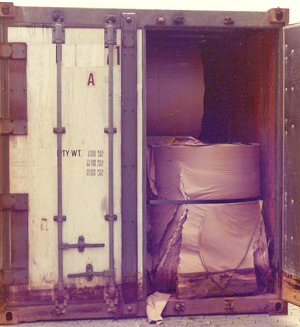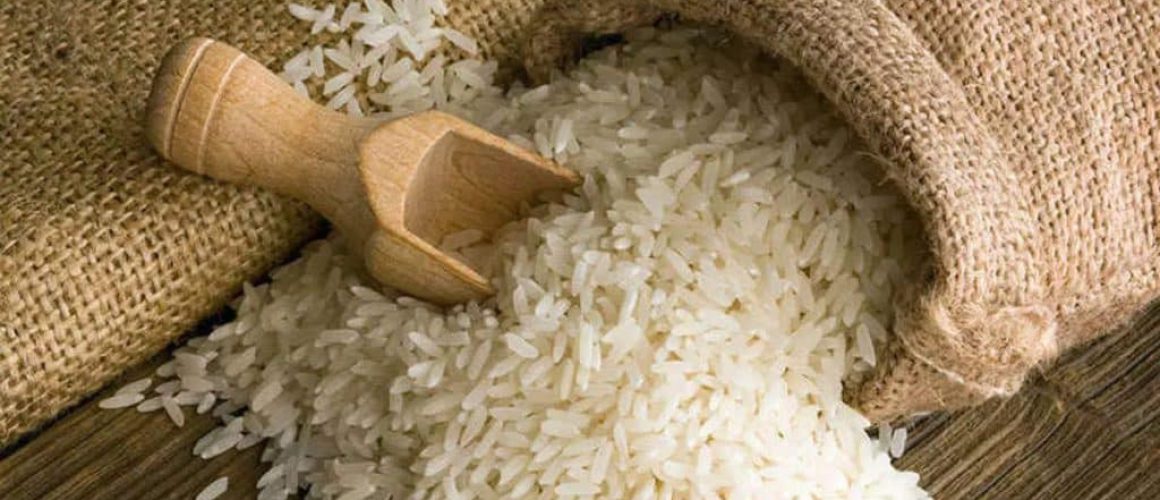Solving Your Moisture-Related Rice Export Challenges
| Key Challenge | Solution | Benefits |
|---|---|---|
| High Moisture Levels in Rice | Use of container desiccants to absorb excess moisture | Prevents mold growth and quality degradation |
| Humidity During Transportation | Employing silica gel and calcium chloride desiccants | Keeps humidity at optimal levels, ensuring safe transit |
| Condensation Issues | Proper packaging and using activated alumina desiccants | Reduces condensation, preserving rice quality |
| Maintaining Product Quality | Use of multiple moisture control solutions | Ensures rice remains fresh and free from contamination |
| Cost-Efficiency in Moisture Control | Bulk purchase of desiccants and tailored packaging | Reduces costs while maintaining export standards |
Table of Contents
“Calcium Chloride stands out for its reusability and high adsorption efficiency, making it an excellent choice for maintaining consistent dryness during long-haul exports.”
Move Away from Losses and Towards Profitability
Rice is one of the world’s most important staple foods, and it is a major commodity for international trade. Rice exporters face a range of challenges, from product quality and consistency to logistics and regulatory compliance. One of the most common challenges that rice exporters face is moisture damage during transportation and storage. Moisture damage can result in reduced quality, lower prices, and even total loss of the product. However, with the right moisture protection solutions, rice exporters can move away from losses and towards profitability.
Key Reasons for Using Desiccants in Rice Export
- Prevents mold growth
- Maintains consistent product quality
- Reduces spoilage and waste
- Ensures rice meets export standards
- Minimizes risk of contamination during transit
The Problem of Moisture Damage in Rice Exports
Moisture damage is a common problem for rice exporters, and it can occur at any stage of the supply chain. During transportation, rice can be exposed to high humidity, condensation, or rain, leading to moisture damage. Similarly, during storage, rice can absorb moisture from the air, leading to mold growth, discoloration, and spoilage. Moisture damage can cause a range of problems, including:
- Reduced quality: Moisture can cause rice grains to stick together or become discolored, which can reduce their value and appeal to buyers.
- Lower prices: Damaged rice is often sold at a lower price than undamaged rice, leading to lower profits for exporters.
- Total loss: In severe cases, moisture damage can render rice unfit for consumption, leading to total loss of the product.
The financial impact of moisture damage can be significant for rice exporters. For example, if a shipment of rice is damaged due to moisture, the exporter may have to pay for the cost of disposal or replacement, as well as any penalties or fees related to non-compliance with regulations or contracts. In addition, the exporter may lose the trust of buyers, leading to a loss of future business.
Common Moisture-Related Challenges and Their Effects
| Challenge | Effect on Rice Quality |
|---|---|
| High Humidity | Leads to mold growth and clumping |
| Condensation | Causes spoilage and reduced product value |
| Inadequate Packaging | Fails to prevent external moisture entry |

Solutions for Moisture Protection in Rice Exports
To avoid moisture damage and move away from losses, rice exporters need to implement effective moisture protection solutions. There are several strategies that can be used to prevent moisture damage in rice exports, including:
- Proper packaging: The type of packaging used for rice exports can have a significant impact on moisture protection. Exporters should use moisture-resistant packaging, such as plastic-lined paper bags or vacuum-sealed bags, to protect rice from moisture during transportation and storage.
- Desiccants: Desiccants are substances that absorb moisture from the air, and they can be used to protect rice from moisture during transportation and storage. Silica gel, activated carbon, and clay desiccants are commonly used in the rice industry.
- Humidity control: Controlling the humidity levels during transportation and storage can help prevent moisture damage. Exporters should use climate-controlled containers or warehouses to maintain optimal humidity levels for rice storage.
- Quality control: Regular quality control checks can help identify moisture damage early, allowing exporters to take corrective action before the problem becomes severe.
- Moisture monitoring: Using moisture monitoring devices, such as moisture meters, can help exporters identify moisture problems during transportation and storage.
- Supply chain optimization: Optimizing the supply chain can help prevent delays and minimize the time that rice spends in transit or storage, reducing the risk of moisture damage.
“Silica gel is a simple yet effective tool for managing moisture, keeping rice fresh by controlling humidity during transportation.”
Types of Desiccants Used in Rice Export
| Desiccant Type | Properties | Usage |
|---|---|---|
| Silica Gel | High moisture absorption capacity | Effective in keeping containers dry |
| Calcium Chloride | Extremely hygroscopic | Excellent for reducing high humidity levels |
| Activated Alumina | Reusable and chemically stable | Used for controlling condensation and dryness |

Benefits of Effective Moisture Protection for Rice Exports
- Effective moisture protection solutions can help rice exporters move away from losses and towards profitability. Here are some of the benefits of using moisture protection solutions in rice exports:
- Higher quality: Moisture protection can help preserve the quality of rice, resulting in a higher value product that can command a higher price.
- Better prices: High-quality rice that is protected from moisture damage can be sold at a premium price, leading to higher profits for exporters.
- Improved reputation: Exporters who consistently deliver high-quality rice can build a strong reputation among buyers, leading to repeat business and increased sales.
- Regulatory compliance: Moisture protection solutions can help exporters meet regulatory requirements for quality and safety, reducing the risk of penalties or fines.
- Reduced waste: Effective moisture protection can help reduce the amount of rice that is lost or damaged during transportation and storage, reducing waste and improving sustainability.
- Competitive advantage: Exporters who invest in moisture protection solutions can gain a competitive advantage over rivals who do not, as they can offer higher-quality products at a more competitive price.
Benefits of Moisture Control Solutions
| Solution | Benefit |
|---|---|
| Bulk purchase of desiccants | Reduces costs and ensures continuous supply |
| Proper packaging | Protects against external humidity |
| Multi-desiccant approach | Comprehensive moisture control for rice |
Frequently Asked Questions
Why is moisture control important in rice export?
Moisture control is crucial in rice export to prevent mold growth, quality degradation, and contamination during storage and transportation. Maintaining proper moisture levels ensures the rice remains fresh and safe for consumption.
What are the common challenges faced during rice export?
Common challenges include high moisture levels, humidity during transportation, condensation, and maintaining product quality. These issues can lead to spoilage, mold growth, and reduced market value of the rice.
How do container desiccants help in moisture control?
Container desiccants absorb excess moisture within the shipping container, preventing mold growth and ensuring that the rice stays dry throughout the journey.
What types of desiccants are used for moisture control in rice export?
Silica gel, calcium chloride, and activated clay desiccants are commonly used for moisture control. Each has unique properties that help manage humidity effectively during transportation.
How can humidity during transportation affect rice quality?
Humidity during transportation can lead to increased moisture levels, causing mold growth, clumping, and degradation of rice quality. Maintaining optimal humidity levels is essential to protect the product.
What solutions are effective for preventing condensation in rice export?
Proper packaging and the use of activated alumina desiccants are effective for reducing condensation inside containers, thereby preserving rice quality.
How does activated alumina help with moisture control?
Activated alumina has a high adsorption capacity, allowing it to effectively remove moisture and prevent condensation within containers, which helps in preserving rice quality.
What are the benefits of using multiple moisture control solutions?
Using multiple moisture control solutions, such as different desiccants and proper packaging, ensures comprehensive protection against moisture, keeping the rice fresh and preventing contamination.
How can bulk purchasing of desiccants improve cost-efficiency?
Bulk purchasing of desiccants reduces overall costs and ensures an ample supply of moisture control materials, helping to maintain consistent product quality and meet export standards.
What is the impact of condensation on rice during export?
Condensation can lead to mold growth, spoilage, and reduced quality of rice. Controlling condensation is vital to protect the integrity of the product throughout the supply chain.
How does proper packaging contribute to moisture control?
Proper packaging acts as a barrier to moisture and works in conjunction with desiccants to protect rice from humidity and condensation during transport.
What are container desiccants, and why are they used?
Container desiccants are moisture-absorbing materials used inside shipping containers to prevent excess humidity, ensuring that products like rice remain dry and free from mold.
How does silica gel help in rice export?
Silica gel is a desiccant that absorbs moisture from the air, helping to keep humidity levels low and protecting the rice from mold and spoilage during transportation.
Why is calcium chloride effective for moisture control?
Calcium chloride has a high moisture absorption capacity, making it particularly effective in reducing humidity and preventing moisture-related issues during rice export.
Can desiccants be reused after transportation?
Some desiccants, like activated alumina, can be regenerated through heating and reused, while others, like silica gel and calcium chloride, are generally intended for single-use applications.
How does moisture control help in maintaining export standards?
Effective moisture control ensures that rice maintains its quality, safety, and freshness, which is crucial for meeting international export standards and satisfying customers.
What role does activated alumina play compared to other desiccants?
Activated alumina has a high adsorption capacity and chemical stability, making it effective for controlling condensation and maintaining dry conditions throughout the export process.
How can exporters ensure consistent quality during long transport periods?
Exporters can ensure consistent quality by using a combination of desiccants, proper packaging, and maintaining optimal humidity levels throughout the shipping process.
What factors should be considered when choosing desiccants for rice export?
Factors include the moisture sensitivity of the rice, the transportation duration, climate conditions, and cost-efficiency of the desiccant solutions being used.
How do desiccants contribute to product freshness during export?
Desiccants absorb excess moisture, preventing mold growth and spoilage, thus preserving the freshness and quality of rice during long-distance transportation.
Conclusion
Moisture damage is a significant challenge for rice exporters, but with the right moisture protection solutions, exporters can move away from losses and towards profitability. By implementing effective packaging, desiccants, humidity control, quality control, moisture monitoring, and supply chain optimization strategies, rice exporters can protect their product from moisture damage, preserve quality, and improve profitability. The benefits of effective moisture protection include higher prices, improved reputation, regulatory compliance, reduced waste, and a competitive advantage. To succeed in the highly competitive rice export industry, exporters must prioritize moisture protection and invest in the right solutions to protect their product and their profits.
https://sse.co.th/product-category/container-desiccant/
https://www.containerhandbuch.de/chb_e/stra/stra_02_03_08.html
